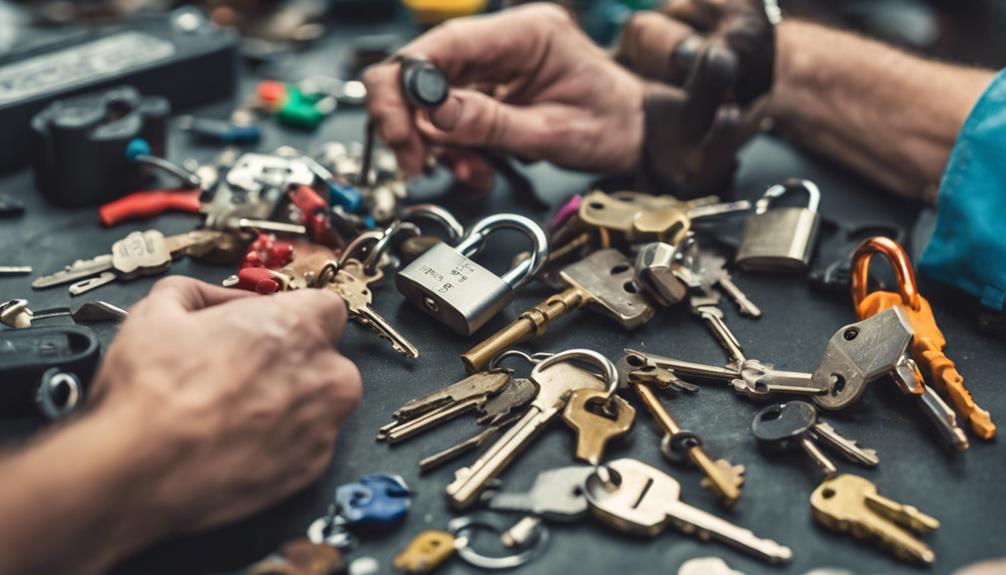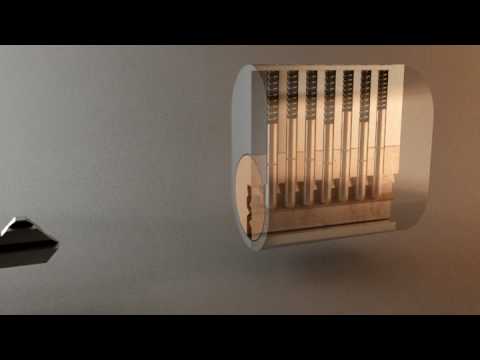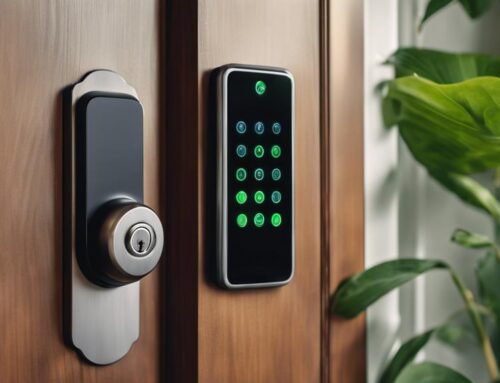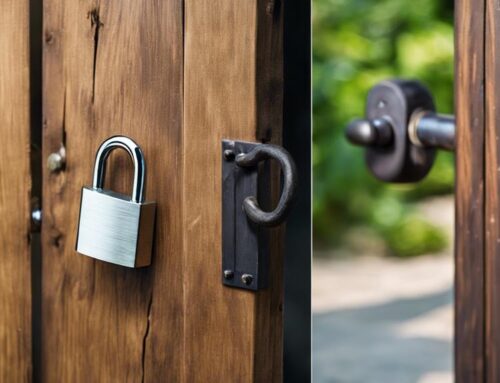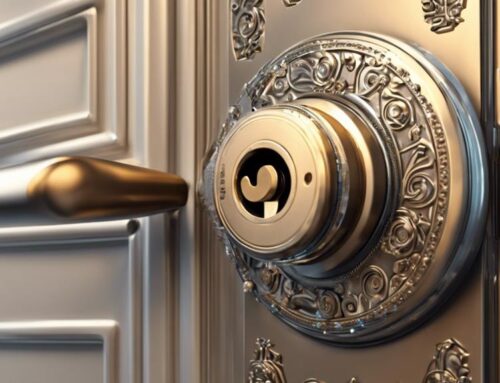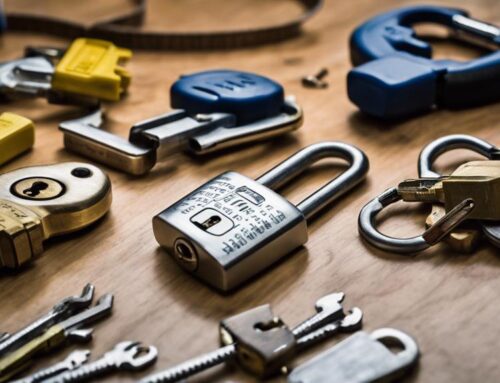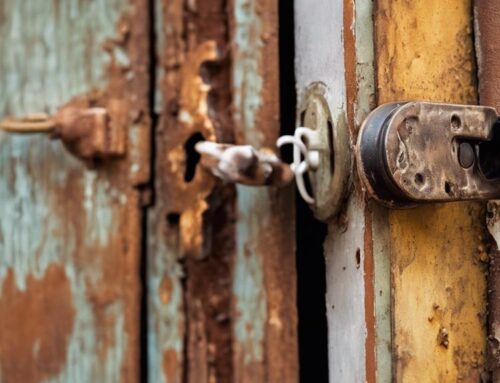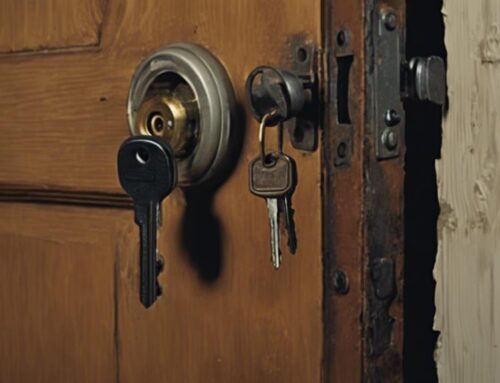Re-keying padlocks and specialty locks is a simple yet effective way to boost your security. You'll need the right tools, like a rekeying kit and a small screwdriver set. Start by removing the lock's cylinder, then swap out the old pins for new ones that match your new key. Not all locks are the same, so make sure you understand the specific mechanism. If you take your time and follow each step carefully, you'll avoid mistakes that could compromise your lock's integrity. Stick around, and you'll uncover more tips and techniques to make this process even smoother.
Key Takeaways
- Understand the specific mechanism of the padlock or specialty lock before attempting to rekey it for effective results.
- Gather necessary tools, such as a rekeying kit, screwdriver, and tweezers, to ensure a smooth rekeying process.
- Carefully disassemble the lock to access internal components, replacing old pins with new ones that match the new key.
- Test the new key after rekeying to confirm proper function and alignment of the pins within the lock.
- Maintain locks regularly through cleaning and lubrication to prolong their lifespan and ensure optimal security.
Understanding Padlock Mechanisms
When it comes to padlock mechanisms, understanding how they work is essential for effective re-keying. You'll find that most padlocks operate using a series of pins and a key that aligns them to allow the shackle to open. This basic mechanism can vary in complexity, especially in specialty locks, which may offer additional features such as anti-pick technology or weather resistance that enhance security.
By grasping these fundamentals and learning about lock re-keying benefits, you can better serve others by ensuring their locks function smoothly and securely.
When rekeying padlocks, you'll want to familiarize yourself with the specific mechanism in use. A specialty lock rekeying guide can be invaluable here, as it breaks down the variations in design and function that different locks present. Each type might employ unique pin arrangements or locking systems, so a one-size-fits-all approach won't suffice.
As you dive deeper into understanding padlock mechanisms, remember that the goal is to empower yourself and those you serve. By mastering the art of rekeying, you not only enhance security but also provide peace of mind.
Knowledge is your best tool, and with it, you'll build trust and reliability in your ability to handle locks effectively.
Tools Required for Rekeying
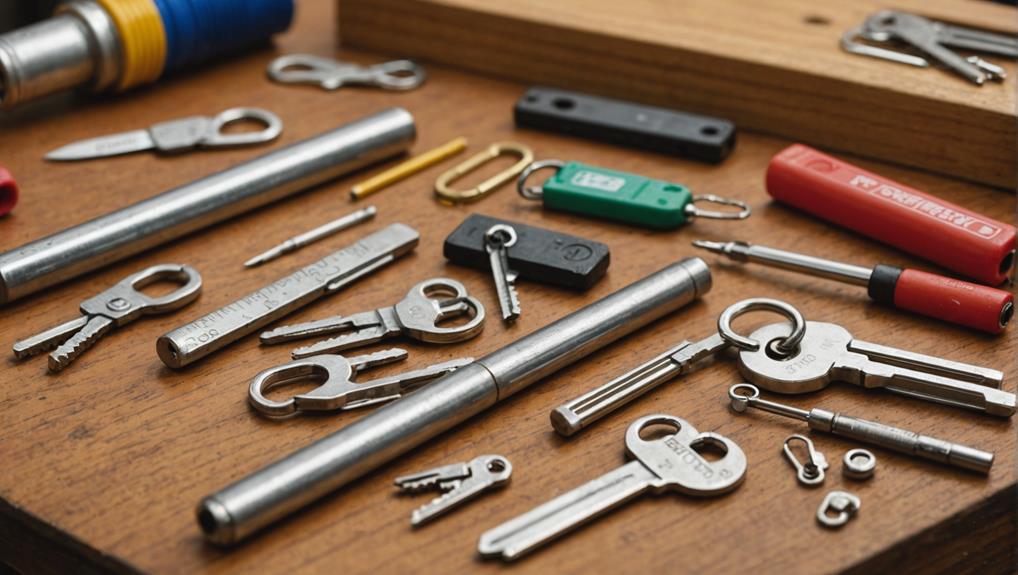
When you're ready to rekey your padlocks or specialty locks, having the right tools is vital for a smooth process.
It's important to guarantee you have all necessary components at hand, as this can make all the difference in the quality of your work.
You'll need a few essential items to get started, and it's important to keep safety precautions in mind to avoid any mishaps.
For an extensive list of essential tools for lock re-keying, let's take a closer look at what you'll need for a successful rekeying process.
Essential Tools Overview
To successfully rekey padlocks and specialty locks, you'll need a few essential tools that streamline the process.
First, a rekeying kit is vital; it usually includes different types of pins and a plug follower, which helps you transfer the pins from one lock to another.
You'll also need a small screwdriver set to remove the lock cylinder and a pair of tweezers for handling tiny pins.
If you're learning how to rekey specialty locks, consider a light source like a flashlight; it'll help you see the inner workings clearly.
For rekeying safes or cabinet locks, a tension wrench can assist in opening the lock cylinder while you work.
Lastly, keep a notebook handy to jot down combinations or pin configurations.
Remember, each lock may require slightly different techniques, so having these tools ready will make your efforts more efficient and effective.
Safety Precautions Needed
Rekeying locks often involves sharp tools and intricate mechanisms, so safety precautions are vital. When you decide to serve others by rekeying their locks, you want to guarantee both your safety and theirs.
Here are some key safety tips to keep in mind:
- Wear Protective Gear: Use safety glasses to shield your eyes from flying debris and gloves to protect your hands from sharp edges.
- Work in a Well-Lit Area: Proper lighting helps you see the intricate parts of the lock clearly, minimizing the risk of accidents.
- Organize Your Tools: Keep your tools neatly arranged. This prevents you from accidentally grabbing the wrong tool, which can lead to injuries.
- Stay Focused: Distracted work can lead to mistakes. Make sure you're in a quiet space where you can concentrate fully on the task.
Step-by-Step Padlock Rekeying
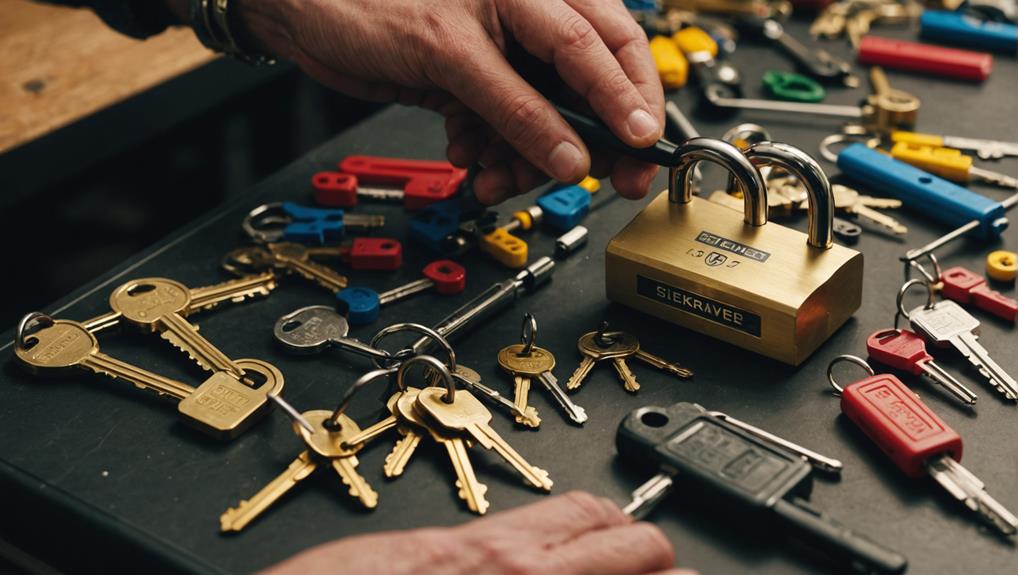
Now that you've gathered the necessary tools for rekeying, it's crucial to verify that you select the right kit tailored to your specific lock type and skill level.
For best results, consider choosing the perfect DIY re-keying kit that suits your needs.
Let's walk through the process step-by-step. You'll learn how to change the tumbler pins and align them correctly for a new key.
With a bit of patience, you'll have your padlock rekeyed in no time.
Tools Required for Rekeying
When it comes to rekeying padlocks, having the right tools on hand makes all the difference. You'll find that using the correct equipment not only simplifies the process but also guarantees a successful outcome.
Here's a list of essential tools you'll need:
- Rekeying Kit: This kit typically includes various pins and springs tailored to your lock type, making it easier to customize the key.
- Tension Wrench: This helps apply the right amount of pressure on the lock cylinder while you're working on it, assuring smooth operation.
- Key Decoder Tool: A decoder will help you accurately determine the cut depths of the original key, crucial for creating a new one.
- Pliers: These are handy for manipulation and removal of small parts within the lock without risking damage.
With these tools in your toolkit, you're well-equipped to serve others by rekeying locks efficiently and effectively.
Rekeying Process Explained
Before you plunge into the rekeying process, it's important to understand the steps involved to guarantee a smooth experience.
First, gather your tools and make certain you have the right key blank for your lock. Start by removing the padlock from its hasp or mounting. Once you've got it in hand, use the appropriate tool to take out the retaining clip, which typically holds the cylinder in place.
Next, slide out the cylinder and note the position of the current pins. This is essential, as you'll need to replace them with new ones that correspond to your new key.
Carefully remove the old pins, and insert the new ones according to the cut of your new key.
After replacing the pins, push the cylinder back into the padlock, making certain everything fits snugly. Reattach the retaining clip to secure the cylinder.
Finally, test the new key to make sure it operates smoothly. If it sticks or doesn't work, double-check the pin alignment.
Rekeying Specialty Locks Overview
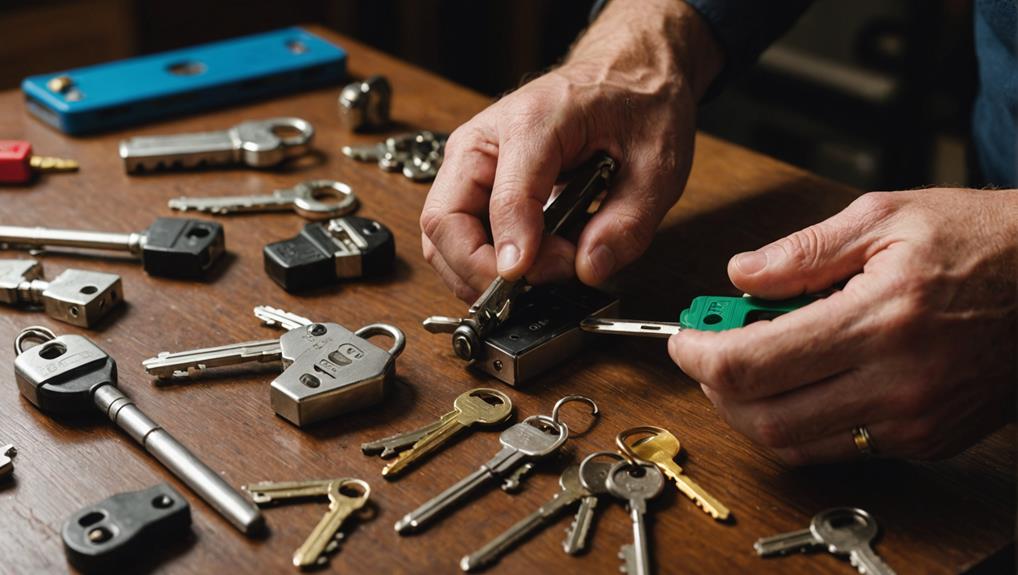
Rekeying specialty locks can seem overwhelming at first, but it's a straightforward process that enhances your security without the need for a complete lock replacement.
Understanding the common challenges associated with this task can help you approach rekeying with confidence. By rekeying, you can guarantee that only trusted individuals have access to your space, making it a responsible choice for your safety and that of others.
Here's an overview of the key steps involved in rekeying specialty locks:
- Identify the Lock Type: Determine whether it's a padlock, deadbolt, or another specialty lock, as the approach can vary.
- Gather Tools: Collect the necessary tools, such as a rekeying kit, screwdriver, and safety glasses, to make the process smoother.
- Disassemble the Lock: Carefully remove the lock from its housing to access the internal components, making sure you follow any specific instructions for the type of lock.
- Change the Pins: Replace the old pins with new ones that match your new key, ensuring a precise fit for maximum security.
Unique Challenges in Rekeying
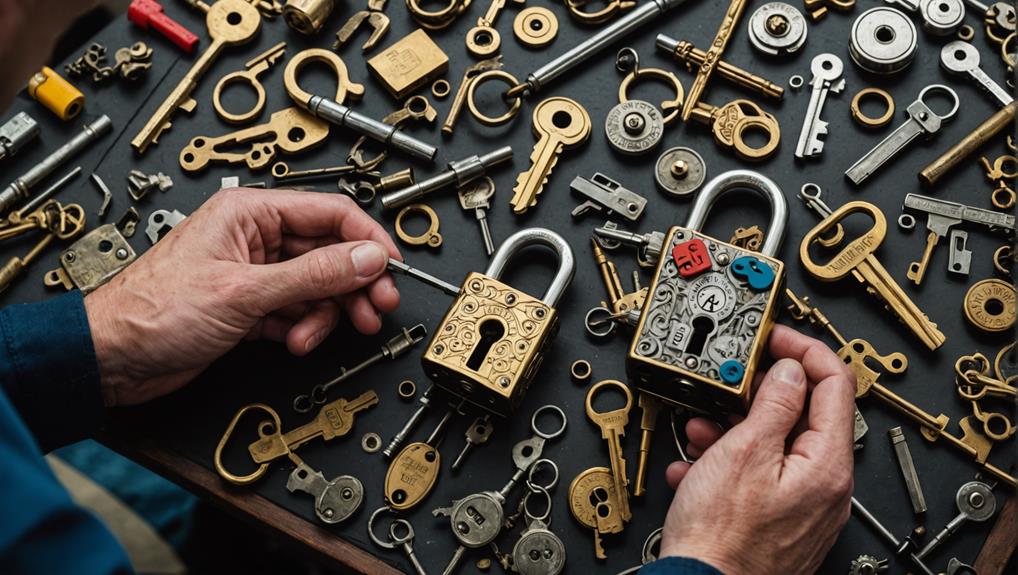
Steering through the intricacies of rekeying specialty locks presents unique challenges that can test even the most seasoned DIY enthusiasts. One significant hurdle you might face is the variability in lock designs.
Unlike standard locks, specialty locks often have complex mechanisms, requiring you to familiarize yourself with their specific rekeying processes. Additionally, the decision between DIY and professional re-keying can impact the overall success of your project, as DIY vs. professional re-keying may offer different benefits depending on your skill level.
Another challenge is obtaining the correct key blanks. Many specialty locks use proprietary key designs, making it tough to find the right replacements. You'll need to invest time in sourcing these unique blanks, which can be frustrating but vital for a successful rekey.
Compatibility issues can also arise. Some locks may not accept standard rekeying tools or kits, forcing you to acquire specialized equipment.
Additionally, you might encounter security features that complicate the rekeying process, such as sidebar mechanisms.
Lastly, patience is key. Rekeying isn't always straightforward, and rushing can lead to mistakes that compromise the lock's integrity.
Maintenance Tips for Locks
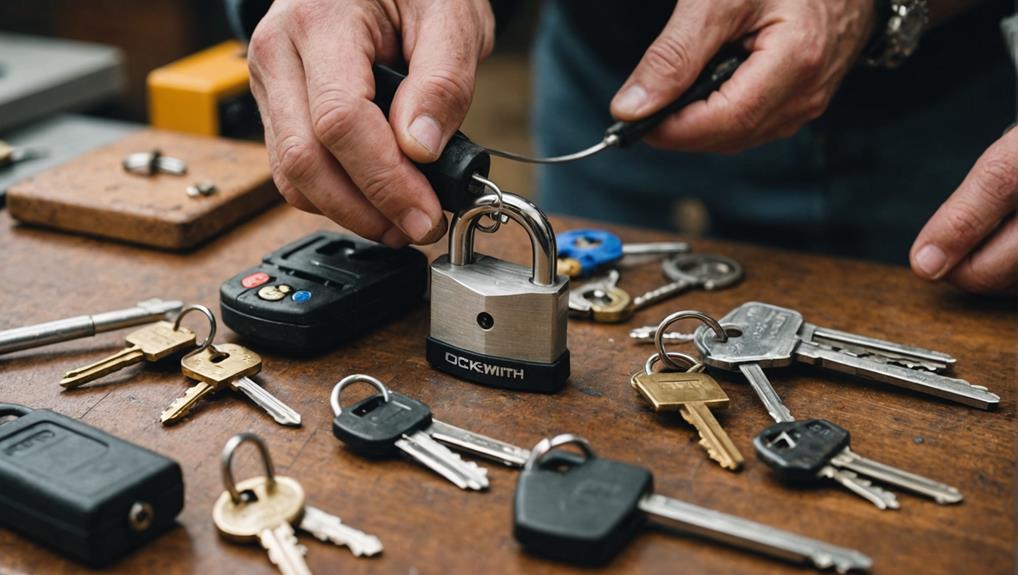
To keep your locks functioning smoothly and securely, regular maintenance is essential. By following these simple tips, you can guarantee that your locks continue to serve you well, providing safety and peace of mind for those you care about.
Proper maintenance not only helps prolong the life of your locks but also enhances their security features, such as the lock pins and tumblers that prevent unauthorized access understanding lock mechanisms.
- Clean your locks regularly: Dust and debris can cause locks to jam. Wipe them down with a soft cloth to keep them free of dirt.
- Lubricate occasionally: Use a silicone-based lubricant or graphite powder to keep the internal mechanisms running smoothly. Avoid using oil-based products, as they can attract dirt.
- Check for wear and tear: Inspect your locks for any signs of damage or rust. If you notice any issues, consider replacing the lock to maintain security.
- Test your keys: Regularly check your keys to guarantee they work effectively. If a key is worn or doesn't turn smoothly, it might be time to rekey or replace it.
Frequently Asked Questions
Can I Rekey a Padlock Without Professional Help?
Yes, you can rekey a padlock without professional help, but it takes some patience and the right tools.
You'll need a rekeying kit specific to your lock type. First, disassemble the lock, then replace the pins with the new ones from your kit.
Follow the instructions carefully to guarantee everything fits properly. If you're unsure at any step, don't hesitate to look up tutorials or ask someone who's done it before.
How Often Should I Rekey My Padlocks?
How often should you rekey your padlocks?
Think about it: isn't your security worth a little maintenance?
It's wise to rekey your locks whenever you suspect a key's gone missing, or when you move to a new place.
Additionally, if you lend your keys out, consider rekeying periodically.
Regularly checking your locks can help guarantee your belongings stay safe, giving you peace of mind while you focus on serving others with confidence.
Are There Any Padlocks That Cannot Be Rekeyed?
Yes, some padlocks can't be rekeyed.
Generally, basic or lower-end models lack rekeying capabilities due to their design. If a padlock has a fixed keyway or isn't built for disassembly, you won't be able to change its key.
It's important to check the manufacturer's specifications or consult a locksmith to guarantee you're choosing a padlock that meets your security needs and can be rekeyed if necessary.
What Should I Do if I Lose My Padlock Key?
If you lose your padlock key, don't panic.
First, check around your space for any spare keys you might've overlooked.
If that doesn't work, consider using a bolt cutter to remove the padlock if it's not too valuable.
You could also call a locksmith who can help you either open it or replace it.
Is Rekeying More Cost-Effective Than Replacing a Lock?
Imagine you've lost your car keys, and you're staring at a hefty replacement bill.
When it comes to locks, rekeying's usually more cost-effective than replacing. You save money and time, plus you maintain your existing hardware.
It's like giving your lock a fresh start without the hassle of installation.
Conclusion
In the world of locks and keys, rekeying can be seen as a rejuvenating makeover for your padlocks and specialty locks. By mastering this skill, you're not just enhancing security; you're also breathing new life into your locking mechanisms. With the right tools and a bit of practice, you'll become a pro in no time. Remember, a little maintenance goes a long way in keeping your locks in tip-top shape. So go ahead, open up your potential!

